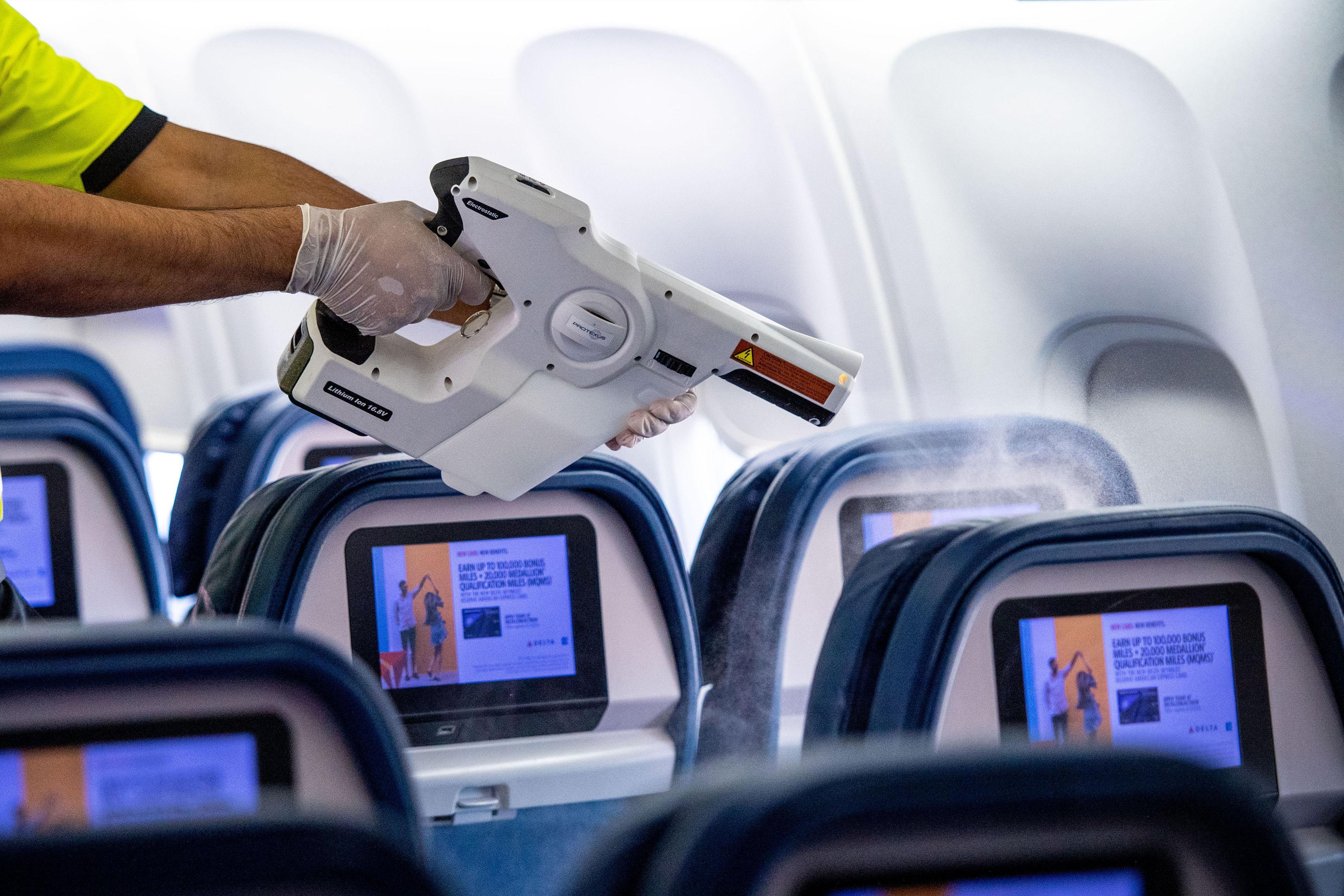
North American airlines, reacting to a sharp and unexpected decline in bookings in response to COVID-19, have ramped up communications aimed at reassuring the traveling public that they are taking extra steps to prevent the virus from spreading.
The messaging—included in emails, website articles featuring videos, and social media posts—vary by carrier. The common theme, however: aircraft are not flying germ labs that increase occupants’ risk of getting sick.
“To date, there are no known cases where this virus has been transmitted from one person to another on an aircraft,” WestJet president and CEO Ed Sims wrote in a Mar. 9 email to customers. WestJet’s message was typical of most airlines, touting “additional measures” beyond routine aircraft cleaning, such as adding “hospital-grade” sprays and wipes.
Alaska Airlines has added two videos to its YouTube channel in the last week—one covering aircraft cleaning, and one that explains the HEPA filtration system typical of most air transport aircraft. The videos had more than 35,000 combined views as of Mar. 10.
A Southwest Airlines video on its aircraft-cleaning procedure posted Mar. 6 had 10,000 views in its first four days. The video and a related blog-post detailed specifics about the airline’s “expanded” process, which started Mar. 4 and takes 6-7 man-hours per aircraft. Southwest says it upgraded its disinfectants and ensures key “touch points” are cleaned nightly, including seat belt buckles, buttons and knobs that passengers use in the cabin. The airline also conducts “additional cleaning procedures at night” on the flight deck, paying “extra attention to microphones and control yoke handles used by pilots.”
Delta Air Lines created an infographic to support its aircraft-cleaning messaging and is one of several carriers touting the use of electrostatic foggers on select aircraft that have been in regions with the highest numbers of confirmed COVID-19 cases.
United Airlines is also using foggers and noted that its cleaning protocol extends into its airport spaces. In addition to cleaning gate areas, it is providing hand sanitizer and gloves for employees.
Inflight procedures are being changed as well. American Airlines said it has taken steps to limit person-to-person contact, such as removing self-serve snack baskets from some flights.
Employee groups have their own outreach programs—in some cases, exceeding those of their employers. The Association of Flight Attendants maintains an extensive COVID-19 page, complete with the latest global statistics and a “communicable disease checklist,” compiled based on past experience with epidemics such as SARS and MERS, that it urges operators to follow.
“Airlines and the industry, not all consistently, have implemented some of these recommendations,” the AFA said. “In general, the industry has far exceeded government instruction, but a coordinated, thorough response from our government is what is needed. We will continue to press for the best procedures to be put in place as soon as possible, both private and public.”
AFA is also pushing for U.S. FAA and Pipeline and Hazardous Materials Safety Administration approvals to allow airlines to store and use large quantities of hand-sanitizer on board aircraft. AFA noted that a 2010 FAA study in response to hand sanitizer being used to combat the spread of H1N1 does not pose added flammability risk. “Burning hand sanitizer does not pose any significant risk to commercial transport airplane fire safety, given the present cabin material flammability requirements,” the 2010 study said.
In almost all cases, the airlines’ messaging comes alongside relaxed change-fee and refund policies aimed at reducing the perceived financial risks of booking. The outreach comes in response to major declines in bookings that have led many airlines to drastically cut capacity system-wide. Initial cuts focused on Asia-Pacific routes where COVID-19 started and spread but have been extended to other international and domestic segments as demand plummets.





